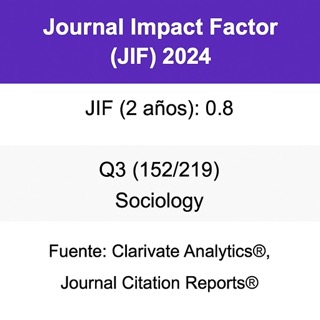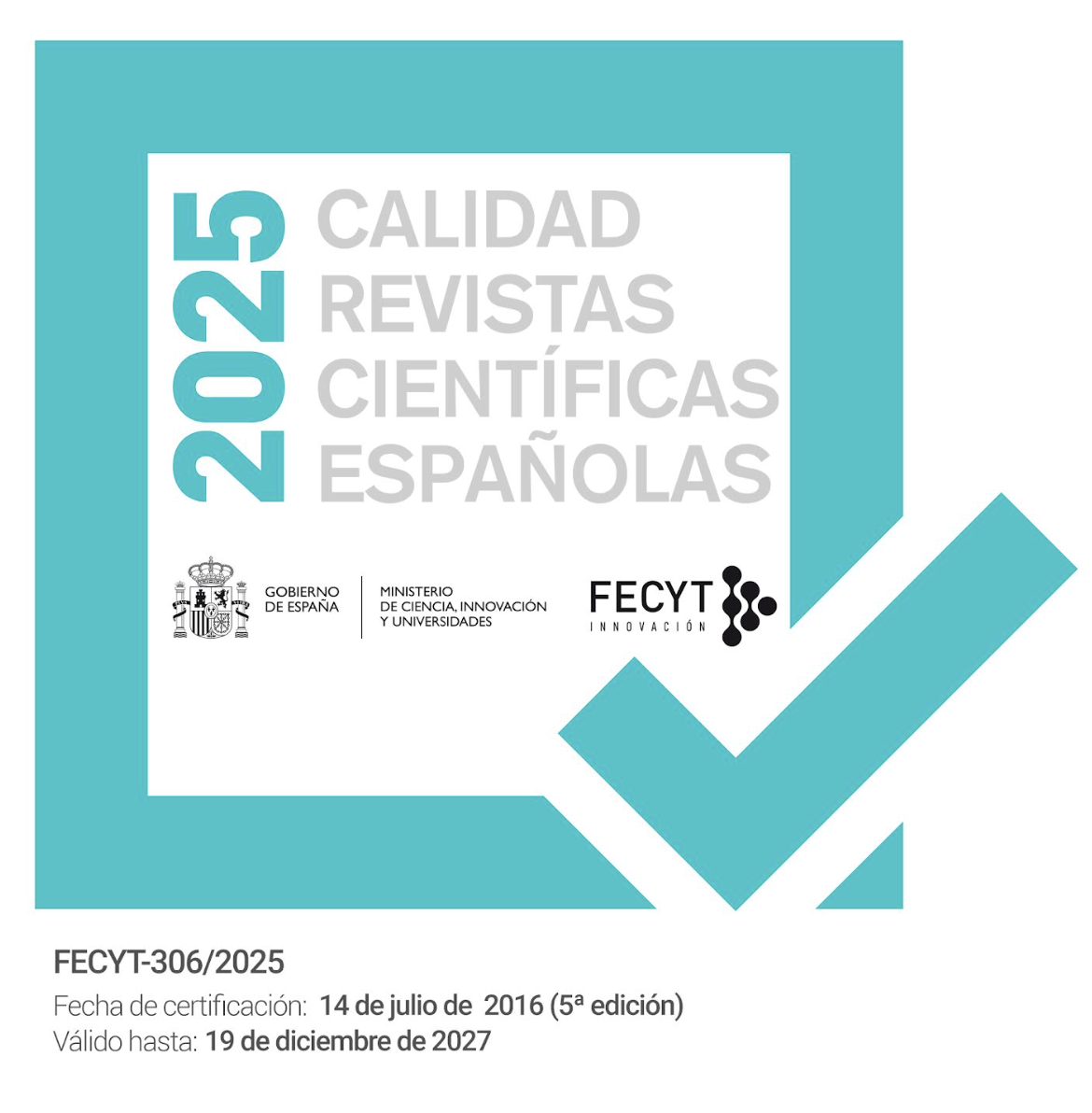"Entonces quieres que todos sean amigos, y [tener] amigos es importante para los estudios, creo": El papel de los compañeros en la integración, la participación y el aprendizaje de los niños
DOI:
https://doi.org/10.22325/fes/res.2024.215Palabras clave:
pares, hacer relaciones entre pares, nivel meso, integración, participaciónResumen
Aunque se reconoce ampliamente la importancia de los contextos sociales en general y de las relaciones entre iguales en particular para la integración y el aprendizaje, el papel de los niños como co-constructores en la configuración de estos procesos sigue sin tenerse suficientemente en cuenta. Los estudios anteriores se han centrado en el individuo o en los macroprocesos, descuidando así los niveles micro y meso al hacer hincapié en los intercambios y las interrelaciones entre los niños y entre éstos y su entorno social. Para abordar esta laguna e iluminar ambos niveles, el presente artículo combina la teoría de Bronfenbrenner con la noción de "hacer relaciones entre iguales", y reúne las perspectivas de niños y profesionales. Los análisis se basaron en entrevistas cualitativas realizadas en cuatro países europeos en el marco de un proyecto más amplio sobre integración y participación de niños inmigrantes. Los resultados muestran el gran potencial de las relaciones entre iguales para la integración y el aprendizaje, que debe aprovecharse con mayor intensidad. Se analizarán las conclusiones para los profesionales de la educación y el trabajo social.
Citas
Allen, K., Kern, M.L., Vella-Brodrick, D., Hattie, J., & Waters, L. (2018). What Schools Need to Know About Fostering School Belonging: a Meta-analysis. Educ Psychol Rev, 30, 1-34. https://doi.org/10.1007/s10648-016-9389-8
Baraldi, C. (2023), Exploring the narratives and agency of children with migrant backgrounds within schools. Researching hybrid integration. Routledge Taylor and Francis. https://doi.org/10.4324/9781003341772
Baraldi, C. (2014). Children’s participation in communication systems: A theoretical perspective to shape research. STAMPA, 18, 63-92.
Baumeister, R. F., & Leary, M. R. (1995). The need to belong: Desire for interpersonal attachments as a fundamental human motivation. Psychological Bulletin, 117(3), 497-529. https://doi.org/10.1037/0033-2909.117.3.497
Beißert, H., Gönültaş, S., & Mulvey, K.L. (2020). Social Inclusion of Refugee and Native Peers Among Adolescents: It is the Language that Matters! Journal of Research on Adolescence, 30(1), 219-233. https://doi.org/10.1111/jora.12518
Bronfenbrenner, U. (1986). Ecology of the family as a context for human development: Research perspectives. Developmental Psychology, 22, 723-742.
Bronfenbrenner, U. (1999). Environments in developmental perspective: Theoretical and operational models. In S. L. Friedman & T. D. Wachs (Eds.), Measuring environment across the life span: Emerging methods and concepts (pp. 3-28). APA. https://doi.org/10.1037/10317-001
Bronfenbrenner, U. & Morris, P.A. (1998). The Ecology of Developmental Processes. In W. Damon & R.M. Lerner (Eds.), Handbook of Child Psychology: Theoretical Models of Human Development (pp. 993-1028). New York: John Wiley.
Brown, C.S. (2017). School context influences the ethnic identity development of immigrant children in middle childhood. Social Development, 26(4), 797-812. https://doi.org/10.1111/sode.12240
Bulotsky-Shearer, R.J., Bell , E.R., Carter, T.M. & Dietrich, S.L.R. (2014) Peer Play Interactions and Learning for Low-Income Preschool Children: The Moderating Role of Classroom Quality. Early Education and Development, 25(6), 815-840. https://doi.org/10.1080/10409289.2014.864214
Caravita, S.C.S., Papotti, N., Gutierrez Arvidsson, E., Thornberg, R., & Valtolina, G.G. (2021). Contact with migrants and perceived school climate as correlates of bullying toward migrants classmates. New Directions for Child and Adolescent Development, 2021(177), 141-157. https://doi.org/10.1002/cad.20400
Celeste, L., Meeussen, L., Verschueren, K., & Phalet, K. (2016). Minority acculturation and peer rejection: Costs of acculturation misfit with peer-group norms. British Journal of Social Psychology, 55, 544-563. https://doi.org/10.1111/bjso.12147
Cerna, L. (2019). Refugee education: Integration models and practices in OECD countries. OECD Education Working Papers, 203. Paris: OECD Publishing. https://doi.org/10.1787/a3251a00-en
Coleman, J.S. (1966). Equality of Educational Opportunity. Washington, D.C.: Government Printing Office.
Collins, W.A., & Laursen, B. (Eds.). (1999). Relationships as Developmental Contexts: The Minnesota Symposia on Child Psychology. New York: Psychology Press. https://doi.org/10.4324/9781410601902
Corsaro, W.A., & Eder, D. (1990). Children's peer cultures. Annual Review of Sociology, 16, 197-220. https://doi.org/10.1146/annurev.so.16.080190.001213
Chu, H. & Thelamour, B. (2021). Conceptual and Methodological Approaches to Navigating Immigrant Ecologies. Cham: Springer Nature Switzerland.
Crul, M., Keskiner, E., Schneider, J., Lelie, F., & Ghaeminia, S. (2017). No lost generation? Education for refugee children. A comparison between Sweden, Germany, the Netherlands and Turkey. In: R. Bauböck, & M. Tripkovic (Eds.), The Integration of Migrants and Refugees. Florence: EUI.
Crul, M., Lelie, F., Biner, Ö. et al. (2019). How the different policies and school systems affect the inclusion of Syrian refugee children in Sweden, Germany, Greece, Lebanon and Turkey. Comparative Migration Studies, 7, 10. https://doi.org/10.1186/s40878-018-0110-6
Deci, E.L., & Ryan, R.M. (1993). Die Selbstbestimmungstheorie der Motivation und ihre Bedeutung für die Pädagogik [The self-determination theory of motivation and its significance for pedagogy]. Zeitschrift für Pädagogik, 39, 223-238.
Devine, D. (2013), ‘Value’ing Children Differently? Migrant Children in Education. Children & Society, 27(4), 282-294. https://doi.org/10.1111/chso.12034
Dizon, L., Selak, V., Ramalho, R., & Peiris-John, R. (2021). Factors influencing the negotiation of ethnic identity among 1.5 and second-generation Asian migrants: A mixed methods systematic review. Journal of Adolescence, 89(1), 95-112, https://doi.org/10.1016/j.adolescence.2021.04.005
Drößler, T., Förtsch, L., & Rohr, M.K. (2021). “Migrant children are not the problem. The problem is the need to make the administration happy.” The perceptions of professionals on participation and acculturation in education contexts. Migration Studies – Review of Polish Diaspora, 4, 55-78, https://doi.org/10.4467/25444972SMPP.21.052.14805.
Eckstein, K., Miklikowska, M. & Noack, P. (2021). School Matters: The Effects of School Experiences on Youth’s Attitudes toward Immigrants. Journal of Youth and Adolescence, 50, 2208-2223. https://doi.org/10.1007/s10964-021-01497-x
Ensor, M.O. (2010). Understanding Migrant Children: Conceptualizations, Approaches, and Issues. In: Ensor, M.O., & E. M. Goździak (Eds.), Children and Migration. Palgrave Macmillan. https://doi.org/10.1057/9780230297098_2
Entorf, H. & Minoiu, N. (2005). What a difference immigration policy makes: a comparison of PISA scores in Europe and traditional countries of immigration. German Economic Review, 6(3), 355-376. https://doi.org/10.1111/j.1468-0475.2005.00137.x
Entorf, H. & Lauk, M. (2008). Peer Effects, Social Multipliers and Migrants at School: An International Comparison. Journal of Ethnic and Migration Studies, 34(4), 633-654, https://doi.org/10.1080/13691830801961639
Esser, H. (2006). Migration, Language and Integration. Berlin: WZB.
Finch, J. (2007). Displaying Families. Sociology, 41(1), 65-81. https://doi.org/10.1177/0038038507072284
Foertsch, L., Ballestri, C., Farini, F., Harju, A., Slany, K., Ślusarczyk, M., Hautamäki, T., Jousmäki, H., & Rohr, M.K. (2023). It takes a village to enable participation and integration. Examining the meaning of social relationships from different perspectives. In C. Baraldi (ed.), Exploring the narratives and agency of children with migrant backgrounds within schools. Researching hybrid integration (p. 49-72). Routledge Taylor and Francis. https://doi.org/10.4324/9781003341772
Goodenow, C. (1993). Classroom Belonging among Early Adolescent Students: Relationships to Motivation and Achievement. The Journal of Early Adolescence, 13(1), 21-43. https://doi.org/10.1177/0272431693013001002
Gönültaş, S., & Mulvey, K.L. (2019). Social-developmental perspective on intergroup attitudes towards immigrants and refugees in childhood and adolescence: A roadmap from theory to practice for an inclusive society. Human Development, 63(2), 90-111. https://doi.org/10.1159/000503173
Grütter, J., Meyer , B., Philipp, M., Stegmann, S., & van Dick, R. (2021). Beyond Ethnic Diversity: The Role of Teacher Care for Interethnic Relations. Frontiers in Education, 5. https://doi.org/10.3389/feduc.2020.586709
Harju-Luukkainen, H., McElvany, N. (2018). Immigrant Student Achievement and Education Policy in Finland. In: Volante, L., Klinger, D., &Bilgili, O. (Eds.), Immigrant Student Achievement and Education Policy. Cham: Springer.
Harris, J. R. (1995). Where is the child’s environment? A group socialization theory of development. Psychological Review, 102(3), 458-489. https://doi.org/10.1037/0033-295X.102.3.458
Heikamp, T., Phalet, K., Van Laar, C., & Verschueren, K. (2020). To belong or not to belong: Protecting minority engagement in the face of discrimination. International Journal of Psychology, 55(5), 779-788. https://doi.org/10.1002/ijop.12706
Holliday, A. (1994). Appropriate methodology and social context. Cambridge: Cambridge University Press.
Jousmäki, H., Kinossalo, M. & Hautamäki, T. (2020). Understanding intercultural competence: From conceptual and curricular objects to competence actions of teachers and social workers working with migrant children. In P. Laine, I. Némethová, & T. Wiwczaroski (Eds.), Intercultural competence at work. Publications of Seinäjoki University of Applied Sciences B Reports, 160 (pp. 126-141). https://urn.fi/URN:NBN:fi-fe20201215100768
Kalkman, K., Haugen, G.M.D., & Valenta, M. (2017). ‘They need to … ’: Exploring practitioners’ attitudes in relation to newcomer migrant children’s needs in Norwegian day care. Childhood, 24(3), 366-380. https://doi.org/10.1177/0907568216688244
Karakus, M., Courtney, M. & Aydin, H. (2023). Understanding the academic achievement of the first- and second-generation immigrant students: a multi-level analysis of PISA 2018 data. Educ Asse Eval Acc, 35, 233-278. https://doi.org/10.1007/s11092-022-09395-x
Kinossalo, M., Jousmäki, H., & Intke-Hernandez, M. (2022). Life-story pedagogy for identity: Through linguistic and cultural recognition to participation and equity. Apples - Journal of Applied Language Studies, 16(2), 99-119. https://doi.org/10.47862/apples.111953
Knörr, J. & Nunes, A. (2005). Introduction. In J. Knörr (Ed.). Childhood and migration: from experience to agency (pp. 9-22). Bielefeld.
Koehler, C. & Schneider, J. (2019). Young refugees in education: the particular challenges of school systems in Europe. Comparative Migration Studies, 7. https://doi.org/10.1186/s40878-019-0129-3
Kościółek, J. (2020). Children with migration backgrounds in Polish schools : problems and challenges. Annales. Series Historia et Sociologia, 30, 601-612. https://doi.org/10.19233/ASHS.2020.40
Kurucz, C., Lehrl, S. & Anders, Y. (2020). Preschool Teachers’ Perspectives About the Engagement of Immigrant and Non-Immigrant Parents in Their Children’s Early Education. International Journal of Early Childhood, 52, 213-231. https://doi.org/10.1007/s13158-020-00269-1
Martin, S., Horgan, D., O’Riordan, J. & Maier, R. (2023) Refugee and migrant children’s views of integration and belonging in school in Ireland – and the role of micro- and meso-level interactions. International Journal of Inclusive Education. https://doi.org/10.1080/13603116.2023.2222304
Mashburn, A.J., & Pianta, R. C. (2006). Social Relationships and School Readiness. Early Education and Development, 17(1), 151-176. https://doi.org/10.1207/s15566935eed1701_7
McPherson, M., Smith-Lovin, L., & Cook, J.M. (2001). Birds of a Feather: Homophily in Social Networks. Annual Review of Sociology, 27, 415-444. https://doi.org/10.1146/annurev.soc.27.1.415
Miklikowska, M. (2017), Development of anti-immigrant attitudes in adolescence: The role of parents, peers, intergroup friendships, and empathy. British Journal of Psychology, 108(3), 626-648. https://doi.org/10.1111/bjop.12236
Nasi, N. (2022). Children’s peer conflict in culturally and linguistically heterogeneous schools: a pedagogical perspective on its risks and opportunities. Civitas educationis. Education, Politics, and Culture, 11(2), 303-322. https://universitypress.unisob.na.it/ojs/index.php/civitaseducationis/article/view/1558
Nieder, C., & Kärtner, J. (2018). Erfolgreiche Erziehung und Entwicklung aus den Augen geflüchteter Familien in Deutschland. In P. Genkova & A. Riecken (Eds.), Handbuch Migration und Erfolg. Springer. https://doi.org/10.1007/978-3-658-18403-2_9-1
Laoire, C.N., Carpena-Méndez, F., & White, A. (2011). Childhood and Migration in Europe: Portraits of Mobility, Identity and Belonging in Contemporary Ireland (1st ed.). London: Routledge. https://doi.org/10.4324/9781315571485
Laursen, B. (1993). Conflict management among close peers. New Directions for Child and Adolescent Development, 1993(60), 39-54. https://doi.org/10.1002/cd.23219936005
Laursen, B., & Adams, R. (2018). Conflict between peers. In W.M. Bukowski, B. Laursen, & K.H. Rubin (Eds.), Handbook of peer interactions, relationships, and groups (pp. 265–283). London: The Guilford Press.
Ohm, J.- A. (2019). Infants’ play: reflection, criticism, and challenges for reexamination. Journal of the Korean Child Support Association, 29-48 [엄정애. (2019). 영유아의 놀이: 재조명에 대한 반성과 비판, 그리고 도전. 한국육아지원학회 학술대회지, 29-48].
Orgocka, A. (2012). Vulnerable Yet Agentic: Independent Child Migrants and Opportunity Structures. New Directions for Child and Adolescent Development, (136), 1–11. https://doi.org/10.1002/cad.20007
Oswald, H. (2009). Persönliche Beziehungen in der Kindheit [Social relationships in childhood]. In: K. Lenz & F. Nestmann, Handbuch Persönliche Beziehungen. Weinheim: Juventa.
Paat, Y.-F. (2013). Working with Immigrant Children and Their Families: An Application of Bronfenbrenner's Ecological Systems Theory, Journal of Human Behavior in the Social Environment, 23(8), 954-966. https://doi.org/10.1080/10911359.2013.800007
Popyk, A., Pustułka, P. & Trąbka, A. (2019). Theorizing Belonging of Migrant Children and Youth at a Meso-Level. Migration Studies – Review of Polish Diaspora, 171, 235-255. https://doi.org/10.4467/25444972SMPP.19.011.10261
Renzaho, A.M.N, Dhingra, N., & Georgeou, N. (2017). Youth as contested sites of culture: The intergenerational acculturation gap amongst new migrant communities—Parental and young adult perspectives. PLOS ONE, 12, e0170700. https://doi.org/10.1371/journal.pone.0170700
Rübner Jørgensen, C.H. (2017). ‘Peer social capital’ and networks of migrants and minority ethnic youth in England and Spain. British Journal of Sociology of Education, 38(4), 566-580. https://doi.org/10.1080/01425692.2015.1131144
Scheepers, D., & Ellemers, N. (2019). Social Identity Theory. In Social Psychology in Action (pp.129-143). Springer. https://doi.org/10.1007/978-3-030-13788-5_9
Schneider-Andrich, P. (2021). Frühe Peerbeziehungen und Kindergruppen: Ein Überblick zum Forschungsstand [Early peer relation and children groups. A research overview]. Frühe Bildung, 10(2), 65-72. https://doi.org/10.1026/2191-9186/a000516
Schnepf, S.V. (2007). Immigrants’ educational disadvantage: an examination across ten countries and three surveys. Journal of Population Economics, 20, 527-545. https://doi.org/10.1007/s00148-006-0102-y
Seaton, E.K., & Douglass, S. (2014). School diversity and racial discrimination among African-American adolescents. Cultural Diversity and Ethnic Minority Psychology, 20(2), 156-165. https://doi.org/10.1037/a0035322
Ślusarczyk, M., Slany, K., Struzik, J., & Warat, M. (2022). (In)visible learners or school as a space for negotiating integration? Challenges of working with migrant children through the lens of teachers. Edukacja Międzykulturowa, 4, 127-138. https://doi.org/10.15804/em.2022.04.08
Strzemecka, S. (2015). School integration in the eyes of migrant children. Based on the Polish migration to Norway. Przegląd Socjologiczny, 64, 81–101. https://cejsh.icm.edu.pl/cejsh/element/bwmeta1.element.desklight-74ec87af-7931-437d-b3c2-7c6c0e3a3c8d/c/5_Strzemecka.pdf
Swedish National Agency for Education (2018). Curriculum for the compulsory school, preschool class and school-age educare. Stockholm: Skolverket.
Tajfel, H., & Turner, J. C. (1979). An integrative theory of intergroup conflict. In W. G. Austin, & S. Worchel (Eds.), The social psychology of intergroup relations (pp. 33-47). Brooks/Cole.
Teja, Z., & Schonert-Reichl, K.A. (2013). Peer Relations of Chinese Adolescent Newcomers: Relations of Peer Group Integration and Friendship Quality to Psychological and School Adjustment. Journal of Migration & Integration, 14, 535-556. https://doi.org/10.1007/s12134-012-0253-5
Toohey, K. & Norton, B. (2003). Autonomy as learner agency in sociocultural settings. In D. Palfreyman, & R. Smith (Eds.), Learner autonomy across cultures (pp. 58-72). London: Palgrave, Macmillan
Titzmann, P.F., Aumann, L. & Lee, R.M. (2023). Acculturation Timing among Newcomer and more Experienced Immigrant Youth: The Role of Language Use in Ethnic Friendship Homophily. Journal of Youth and Adolescence, 52, 2357-2369. https://doi.org/10.1007/s10964-023-01830-6
van de Vijver, F.J.R. (2018). Immigration Policies: Relevant for Developmental Science. Human Development, 61(1), 1-3. https://doi.org/10.1159/000485363
van Vemde, L., Hornstra, L. & Thijs, J. (2021). Classroom Predictors of National Belonging: The Role of Interethnic Contact and Teachers’ and Classmates’ Diversity Norms. J Youth Adolescence, 50(2), 1709-1725. https://doi.org/10.1007/s10964-021-01430-2
von Grünigen, R., Kochenderfer-Ladd, B., Perren, S., & Alsaker, F.D. (2012). Links between local language competence and peer relations among Swiss and immigrant children: The mediating role of social behavior. Journal of School Psychology, 50, 195-213. https://doi.org/10.1016/j.jsp.2011.09.005
Wimelius, M.E., Eriksson, M., Isaksson, J., & Ghazinour, M. (2017). Swedish Reception of Unaccompanied Refugee Children—Promoting Integration? Int. Migration & Integration, 18, 143-157. https://doi.org/10.1007/s12134-016-0472-2
Youniss, J. (1982). Die Entwicklung und Funktion von Freundschaftsbeziehungen [The development and function of friendship relationships]. In: W. Edelstein & M. Keller (Eds.), Perspektivität und Interpretation (pp. 78-109). Frankfurt a.M.: Suhrkamp.
Descargas
Publicado
Cómo citar
Número
Sección
Licencia
Derechos de autor 2024 Margund Rohr, Lena Foertsch, Thomas Droessler, Anne Harju, Tiina Hautamäki, Henna Jousmäki, Krystyna Slany, Magdalena Ślusarczyk, Harald Wagner

Esta obra está bajo una licencia internacional Creative Commons Atribución-NoComercial 4.0.
Todas las publicaciones de la Revista Española de Sociología se realizarán bajo una licencia abierta Creative Commons de Reconocimiento 4.0 Internacional (CC BY 4.0). Dicha licencia establece que los autores son los poseedores de los derechos de propiedad intelectual de sus trabajos, que pueden redistribuirse a cambio de un reconocimiento adecuado. Para más información de la licencia Creative Commons, consultar aquí.
Una vez aceptado un artículo para su publicación, la Revista Española de Sociología solicitará al denominado "autor para la correspondencia" la aceptación de una licencia obligatoria Creative Commons incluida en un acuerdo o contrato de publicación.




